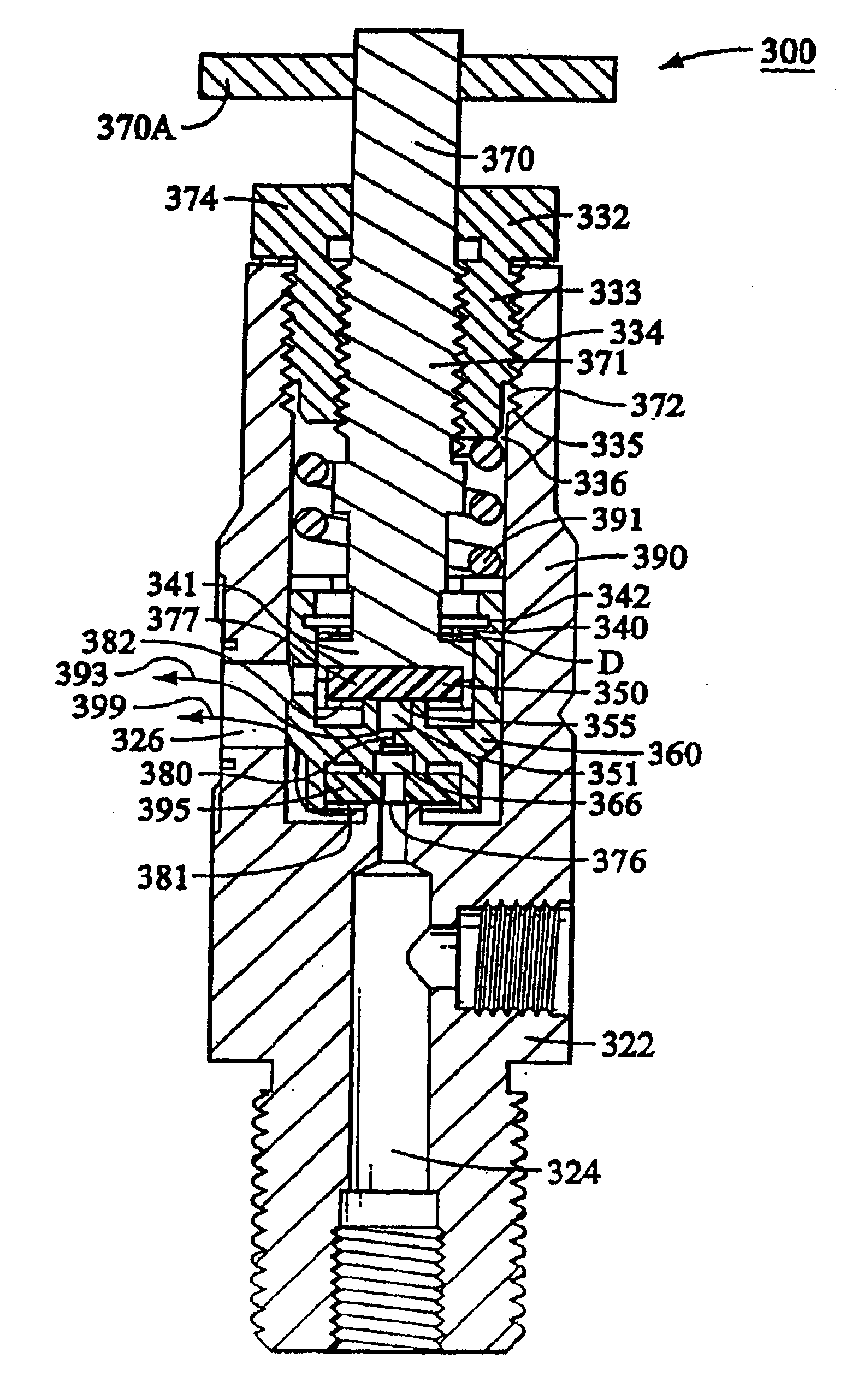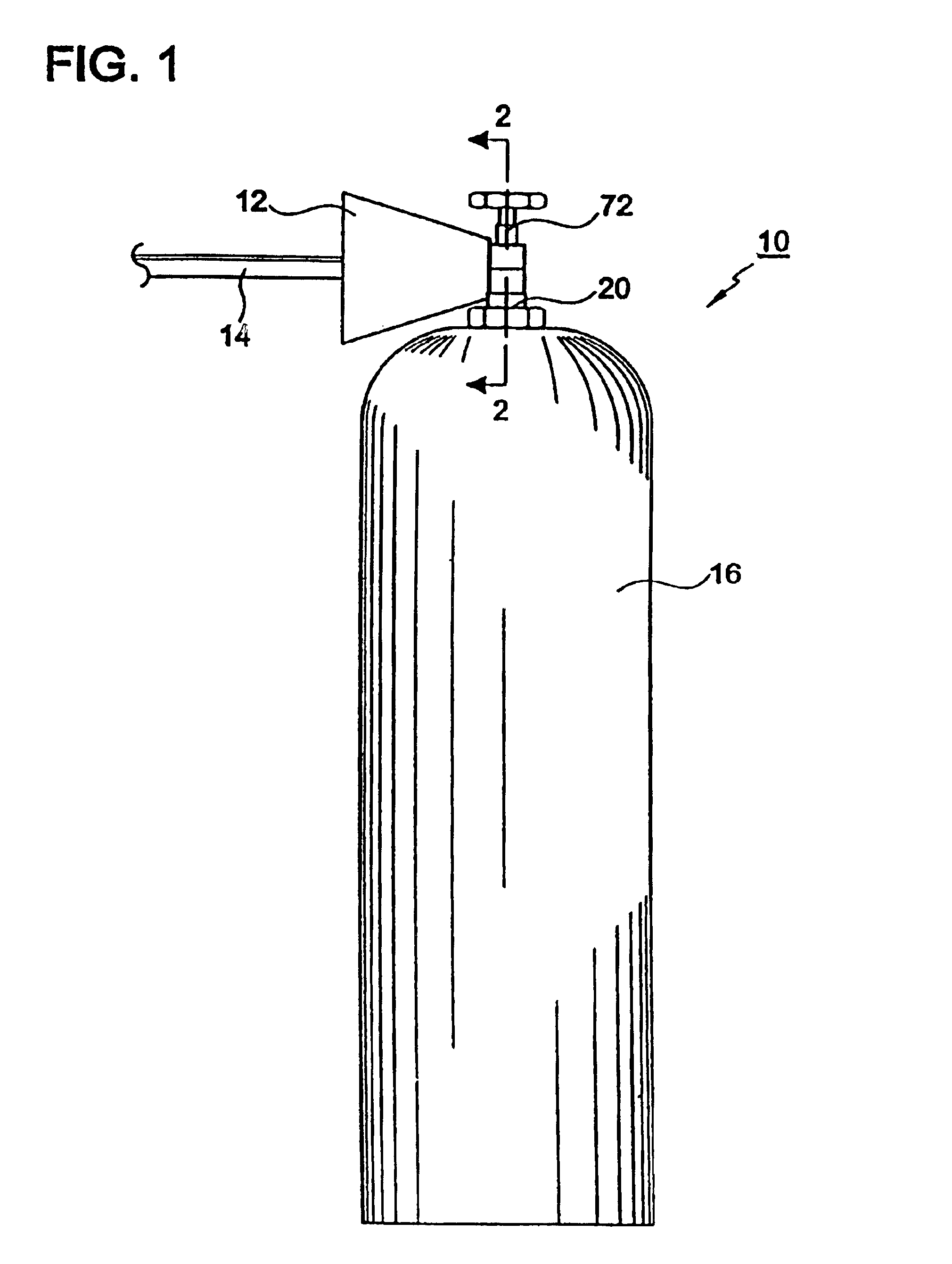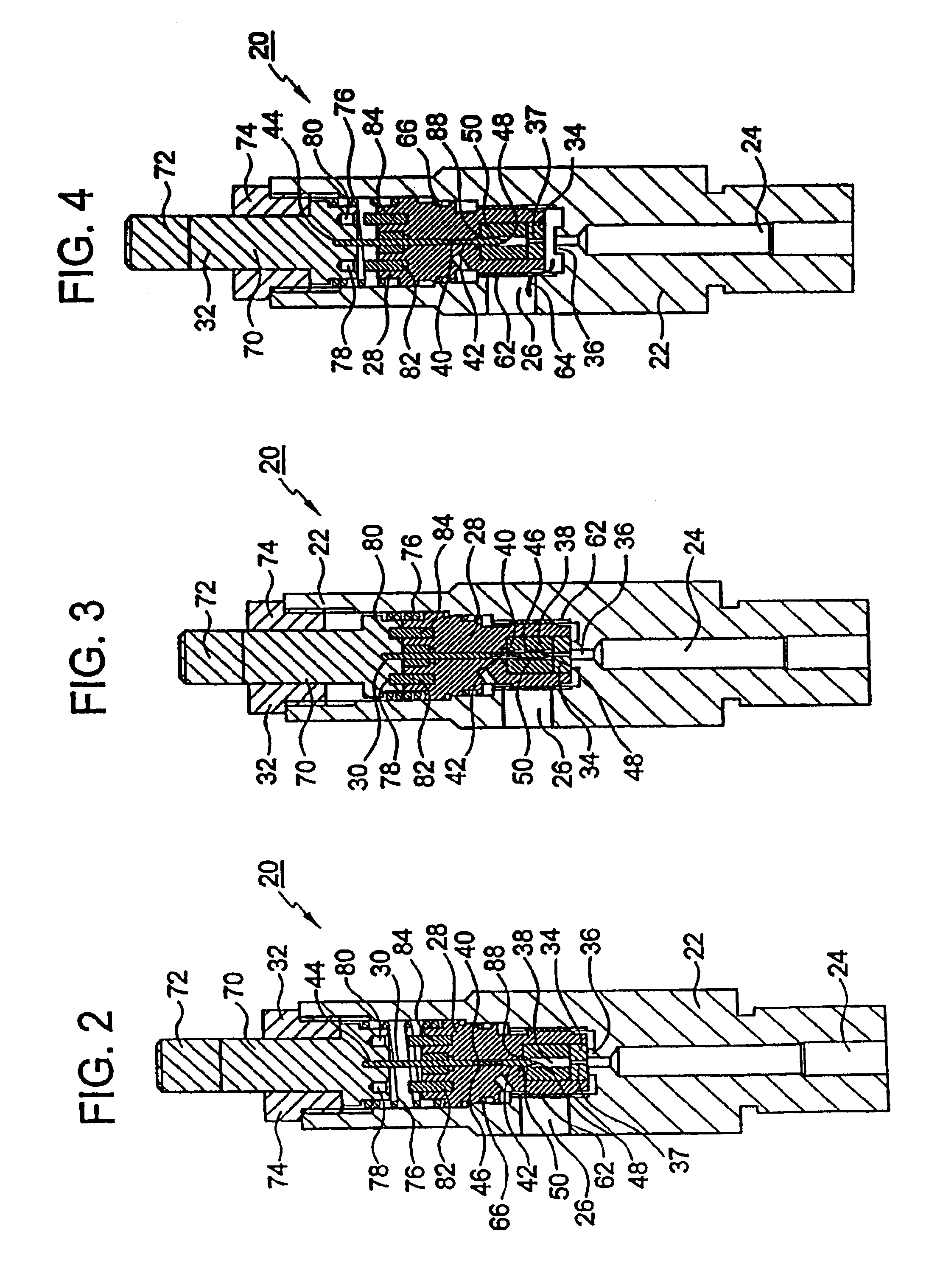Surge prevention device
a technology of a surge prevention device and a pressure regulator, which is applied in the direction of water supply installation, pressure relieving device on the sealing face, container discharging method, etc., can solve the problems of high risk of oxygen regulator failure, unsatisfactory high pressure surge, and similar problems with respect to nitrous oxide supplied, so as to avoid excessive heating and high pressure surge. , the effect of heat during gas recompression
- Summary
- Abstract
- Description
- Claims
- Application Information
AI Technical Summary
Benefits of technology
Problems solved by technology
Method used
Image
Examples
Embodiment Construction
[0031]Referring now to the drawings, where like elements are designated by like reference numerals, there is shown in FIG. 1 an oxygen supply system 10 constructed in accordance with a preferred embodiment of the present invention. A detailed description of the illustrated system 10 is provided below. The present invention should not be limited, however, to the specific features of the illustrated system 10.
[0032]Referring now to FIG. 1, the oxygen supply system 10 includes a pressure regulator 12, a conduit 14 for flowing oxygen from the pressure regulator 12 to a patient (not illustrated), a source of oxygen 16, and a post valve 20 for preventing oxygen from flowing out of the source 16. The source 16 may be an oxygen cylinder, for example. As discussed in more detail below, the valve 20 may be arranged to prevent a high pressure surge from occurring in the pressure regulator 12 when the valve 20 is opened. In addition to oxygen, the present invention may be also used to handle ni...
PUM
 Login to View More
Login to View More Abstract
Description
Claims
Application Information
 Login to View More
Login to View More - R&D
- Intellectual Property
- Life Sciences
- Materials
- Tech Scout
- Unparalleled Data Quality
- Higher Quality Content
- 60% Fewer Hallucinations
Browse by: Latest US Patents, China's latest patents, Technical Efficacy Thesaurus, Application Domain, Technology Topic, Popular Technical Reports.
© 2025 PatSnap. All rights reserved.Legal|Privacy policy|Modern Slavery Act Transparency Statement|Sitemap|About US| Contact US: help@patsnap.com



